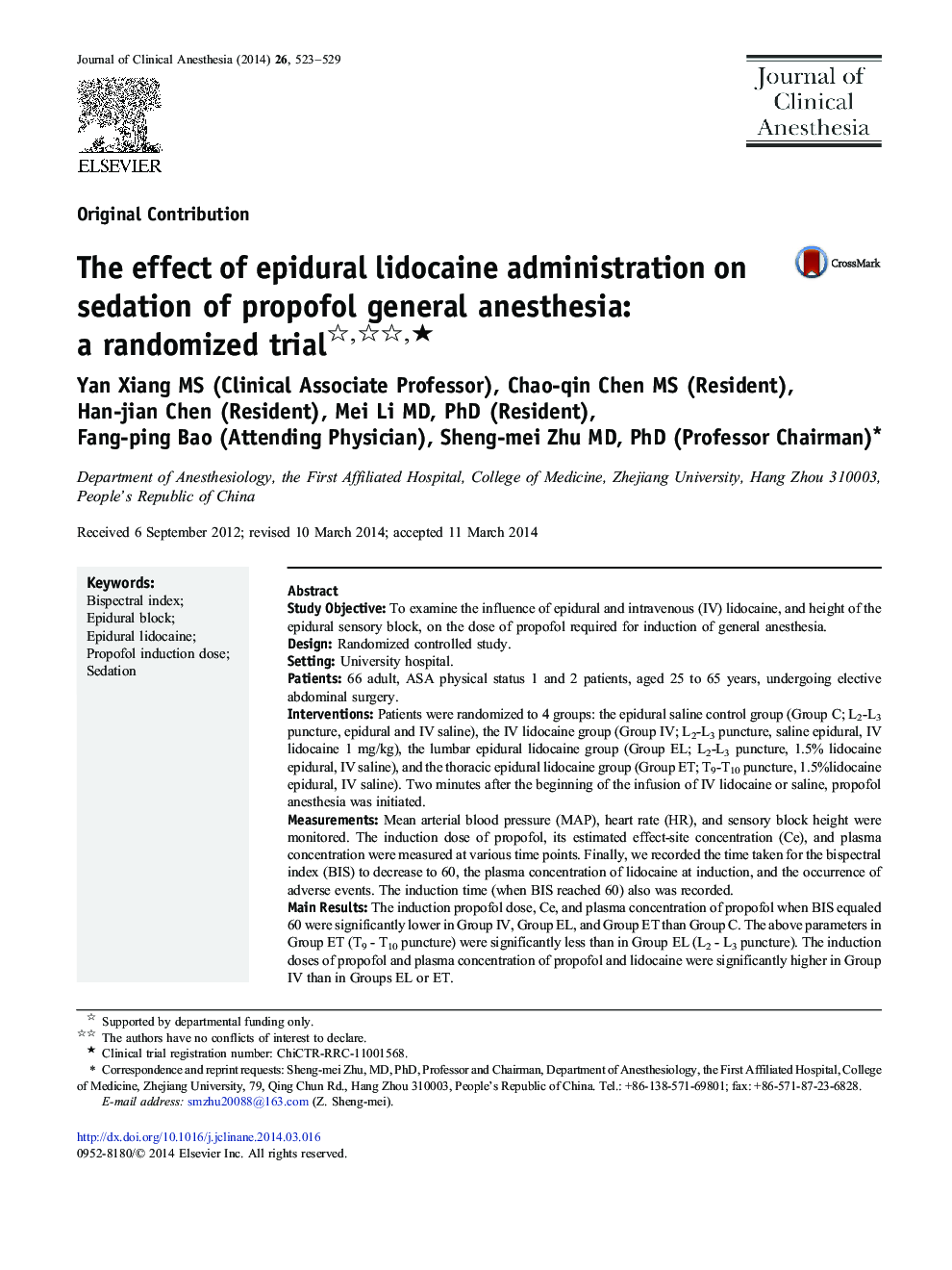| Article ID | Journal | Published Year | Pages | File Type |
|---|---|---|---|---|
| 2762278 | Journal of Clinical Anesthesia | 2014 | 7 Pages |
Study ObjectiveTo examine the influence of epidural and intravenous (IV) lidocaine, and height of the epidural sensory block, on the dose of propofol required for induction of general anesthesia.DesignRandomized controlled study.SettingUniversity hospital.Patients66 adult, ASA physical status 1 and 2 patients, aged 25 to 65 years, undergoing elective abdominal surgery.InterventionsPatients were randomized to 4 groups: the epidural saline control group (Group C; L2-L3 puncture, epidural and IV saline), the IV lidocaine group (Group IV; L2-L3 puncture, saline epidural, IV lidocaine 1 mg/kg), the lumbar epidural lidocaine group (Group EL; L2-L3 puncture, 1.5% lidocaine epidural, IV saline), and the thoracic epidural lidocaine group (Group ET; T9-T10 puncture, 1.5%lidocaine epidural, IV saline). Two minutes after the beginning of the infusion of IV lidocaine or saline, propofol anesthesia was initiated.MeasurementsMean arterial blood pressure (MAP), heart rate (HR), and sensory block height were monitored. The induction dose of propofol, its estimated effect-site concentration (Ce), and plasma concentration were measured at various time points. Finally, we recorded the time taken for the bispectral index (BIS) to decrease to 60, the plasma concentration of lidocaine at induction, and the occurrence of adverse events. The induction time (when BIS reached 60) also was recorded.Main ResultsThe induction propofol dose, Ce, and plasma concentration of propofol when BIS equaled 60 were significantly lower in Group IV, Group EL, and Group ET than Group C. The above parameters in Group ET (T9 - T10 puncture) were significantly less than in Group EL (L2 - L3 puncture). The induction doses of propofol and plasma concentration of propofol and lidocaine were significantly higher in Group IV than in Groups EL or ET.ConclusionsEpidural and IV lidocaine reduce the dose of propofol required to induce general anesthesia. Administration of lidocaine via the epidural route reduces anesthetic requirements more so than the IV route. Propofol requirements were further reduced in patients with higher sensory epidural block.
